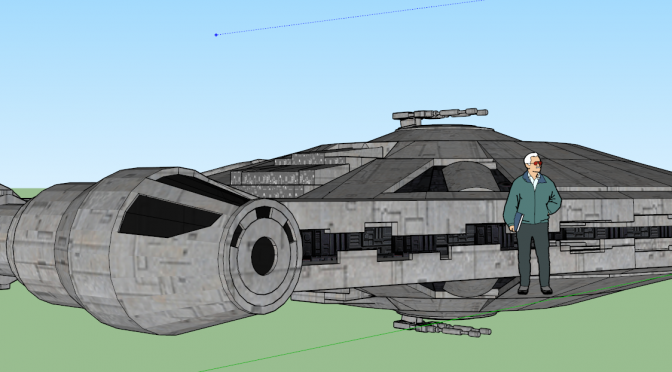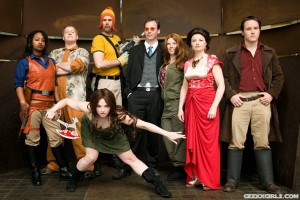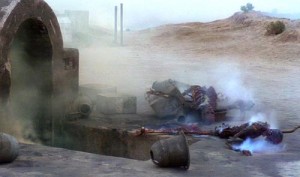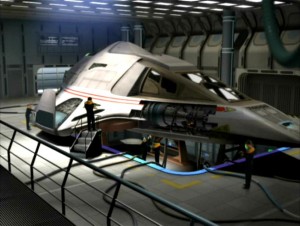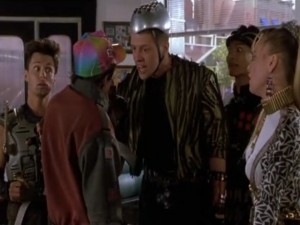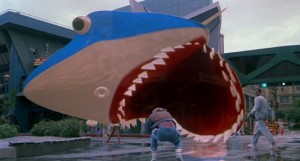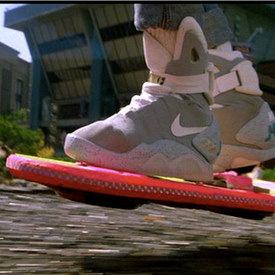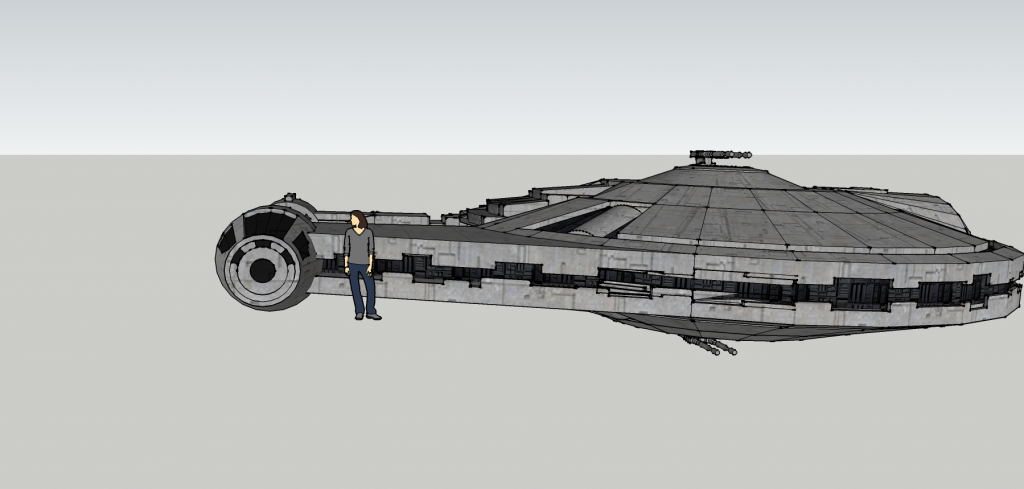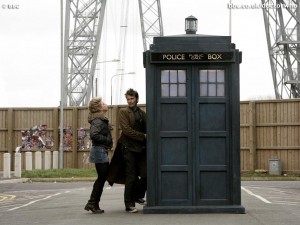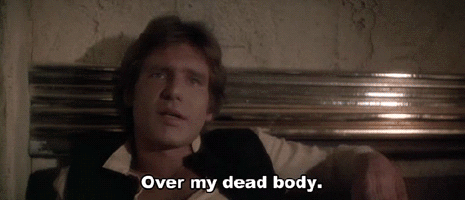As I pointed out this last Friday with the passing of Leonard Nimoy, the geek community as a whole has a somewhat unique relationship with what we love. We tend to find meaning in it in a way that keeps us going from day to day. We’re not all obsessed by it, but the ones who are have gotten there as a natural progression of finding more and more purpose in what they’ve latched onto.
And as the love for these creations grows you find that it starts to bleed into the real world over time. Every major movie release in the fantasy or sci-fi genres will almost universally have at least one group of cosplayers show up. Whenever a new Harry Potter book hit the shelves towards the end of the series – you found an awful lot of Harry look-a-likes lining up around the corner. In a very literal sense, once you get to a certain point of fandom, you’re going to be wearing that fandom on your sleeve.
Once you hit a certain level, once you’re mingling with those people, it’s impossible to deny that it has become part of your world. It’s because of this that you’ll find corners of the fan community where people are willing to argue vehemently about every little detail found in their chosen universes. Trekkies will argue who the best Captain was. Star Wars fans will argue over whether or not Han was bullshitting when he used the term “parsec” wrong. And, of course, fans of Lord of the Rings will constantly bicker over those damned eagles.
But, as a writer, I think it’s time we fess up about something to the fans. Most details that get added to our stories are for three reasons – cool factor, flavor, and pragmatism. And the details we don’t add?
We…didn’t think of them…
The Art Of Winging It
The answer to some questions that put fans ablaze are often pretty mundane in nature. Tolkien once admitted that the reason he didn’t involve the eagles during Lord of the Rings was because he didn’t think of them at the time and that, even if he did, it wouldn’t have been a very good story if he’d had them resolve the whole thing right away. And over in Star Wars the reason why Han Solo said the word “parsec” is simply because no one who was involved in writing the movie actually knew what the hell a parsec was at the time and it sounded like a unit of time. And the whole “why did the Storm Troopers always miss” debate?
It would have been a short movie if they didn’t miss the heroes.
I think a lot of times the fan community forgets that a great deal of what’s done is for the benefit of a good story. There are certain details that are there almost strictly for the reason of making the story we’re trying to tell work and work well. This is one of the reasons why I argue that we shouldn’t base our vision of the future entirely around our nostalgia of movies or shows of the past. And, for that matter, as writers, I don’t think we should feel like we have to make our creations dovetail with what came before unless we absolutely feel like it.
For instance, Star Trek’s greater technologies were all basically built around the need for them to simply explain away otherwise impossible feats. The warp drive was cooked up because it was clear by that point that traveling to another planet was going to be a hell of a lot harder than people thought it’d be no more than 10 to 20 years earlier. The communicators were cooked up because characters had to talk to each other across vast distances but it was impractical to build a giant transmitter prop for the whole thing. And transporters? That was a solution for the budget so that they could use one room to send the characters from the ship to whatever planet they needed to go to.
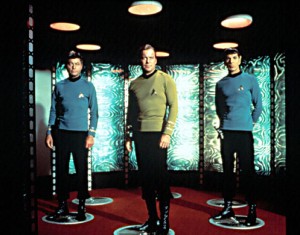
And that budget issue, that was vital. Back in the days of Star Trek’s original series, it was unfathomable to try to depict a shuttle leaving the ship, flying towards a planet, and then entering that planet’s atmosphere for every single episode. Today the effect could be easily done via CGI, but back then? Near impossible. And if you look at the history of the shows involved you’ll find that shuttle travel became a lot more common in The Next Generation and continually got more common in each consecutive series. By the time of Voyager, they spent entire episodes talking about how awesome one of their shuttles was.
It wasn’t that they suddenly decided they liked shuttles, it just got a hell of a lot cheaper to depict those shuttles more frequently. And that’s what drives a lot of things in what we work on – what works for the story. In fact, it goes both directions, not only do we add things to shortcut through problems, but sometimes there are problems we overlook that end up translating to us forgetting to apply a solution. Case in point? When books were produced to show people what these ships in Star Trek looked like inside and out, it was discovered that the original Enterprise had no restrooms.
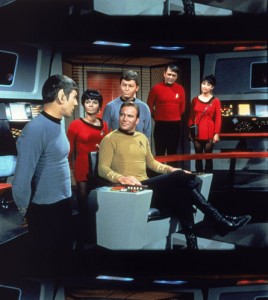
Now why would they forget something like that? The easiest answer is, like with Tolkien, they never thought about it. They weren’t going to ever dedicate a scene of the show to Kirk going to the bathroom, so why would they stop to think about it? And when they didn’t stop to think about it, it translated over to other works distributed to the fans, overlooked until someone discovered it in amusement, told everyone else, and moved on with their lives. Ironically, it became such a huge joke in the fan community, TNG made a point to reference baths more than once over the course of the show.
So when I make the argument that we shouldn’t base our image of the future on what we’ve seen in creations of the past, I’m doing so with the knowledge that some things were there just for the sake of making the story work. But I think a lot of times we ignore that fact in favor of nostalgia factor and don’t see what we’re really doing. There are a lot of things that we get so hung up on as fans and creators that we overlook other, better alternatives over and over.
One example was when I recently said that Nike shouldn’t be developing self-lacing shoes just to fill our need for nostalgia. Some people thought I was being cynical and that I was demanding we put those engineers on to far fetched things like “building nuclear reactors”. But what I really meant was that I didn’t think we had to craft what we were creating tomorrow around an idea that was introduced for pragmatic reasons yesterday. I know wearable technology is going to be the wave of the future sooner rather than later, and I think a lot of the ideas coming out of wearable technology are a lot better than “self lacing shoes”. But you know why the shoes existed in Back to the Future II? So they could explain why their characters looked like this.
One of the quick tricks for making the future cheaply in movies and shows is to use the cheapest element you can change and change it. Don’t want to have to build a whole set? Don’t. Can only afford to show flying cars for a few minutes? Only show them for a few minutes. Only have enough money to do a few holograms like the one for the Jaws movie?
Then don’t push it. All you really need to do is change wardrobe and props to be as alien as possible and then fill in why it looks so different with the cute little details. After all, the thing that changes fastest in the world is fashion so you can easily make it look like a future society by just changing what people are wearing while the rest of the world looks 80~90% the same anyway. You need your punks to look more future punk, you need your average person to look like they’re wearing something space-age, and you need your skateboards to seem more advanced than your modern day skateboard.
And you’d think that a hover-board is an expensive trick for movies, but you’d be wrong. Unlike modern movies where we’d just throw CG at it and call it a day, that trick was done with some good old fashioned practical effects (in fact, one of the stunt people was severely injured in the filming of it). So, for the most part, the future was being relayed to you via details you could see at a glance and all of the details of why it looked that way were just thrown in to make you respect that’s a reasonable appearance for the future. Marty’s jacket looks like collapsible pipes are lining all the joints because it was futuristic. But the act of resizing itself? That explained why someone in the future would wear something that looked so silly.
And that extends to almost everything. One of my friends recently began a D&D campaign using a Star Wars source book to play something a little different. What he found in the process of it was that a lot of the ships were poorly designed and unrealistic even by their own standards. In fact, when using the measurements on floor-plans he found in the source book and then doing the math, he found that, not only did the ship they chose not work for the kind of role it was meant to fill, it was so short that the crew couldn’t even stand upright inside it.
Why would it be so small? Because the people who were doing it were just guessing. The original design was just done for the sake of making it look cool when the characters flew it around. Hell, this is why the TARDIS is so brilliant, because everyone to ever work on a sci-fi series of any kind knew that every set vs. ship model was inevitably bigger on the inside. Leave it to the British to just accept that fact and make it a feature.
But when my friend encountered the problem he thought that an easy solution would just be to make the ship taller to fit people inside it and then change the measurements according to the proportions as they were originally set up. This seemed like a reasonable solution to him, at least, it should have been. But another player, a die hard fan of the Star Wars universe, decided that this change to the details meant a change of the universe – his universe. It was as if he’d just declared Greedo shooting first had become the accepted fan canon.
So what ended up happening was that they started to have arguments over whether or not changing the details of this universe for the sake of making their game work was “ruining” it or not. And the whole time I thought to myself: if any writer of the official works had run into the same problem, they would have changed it without a second thought. In fact, they probably have at some point in the past and just never mentioned it to anyone.
And that’s really the message I’m trying to convey today. If you’re a fan of the work, let some of the details pass. We don’t need to be so caught up in them that we ruin the fun by getting angry about it. And, if you’re a writer, don’t be a slave to what’s come before – be willing to carve your own path. Of course, when you do, try to be mindful of as many details as you can, because remember…
At some point fanboys are going to argue about this stuff.
(I write books. There’s a detail in one of them I forgot to explain, so I’m going to explain it in the upcoming third book. Meanwhile, if you want to see other details, follow my twitter, where I’ll be updating the universe with #AlterFacts)


